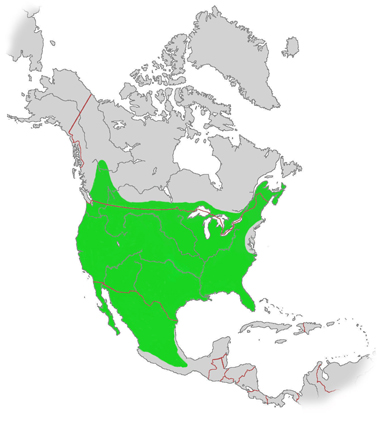CLICK THE LINK BELOW TO VIEW VIDEO OF A BOBCAT WITH ITS SQUIRREL KILl, LOUNGING IN A TREE
https://www.earthtouchnews.com/natural-world/predator-vs-prey/that-moment-when-a-bobcat-hunts-a-squirrel-in-your-backyard-video
That moment when a bobcat hunts a squirrel in your backyard (Video)
That moment when a bobcat hunts a squirrel in your backyard (Video)
BY EARTH TOUCH NEWS JUNE 30 2017With their elusive and mostly nocturnal habits, bobcats tend to stay out of our sight. But one California resident managed to capture a rare encounter on film this week – and the cat in question just happened to be enjoying a squirrel snack right in her backyard.
Clayton resident Redna Chairil shared footage of the predation with local media. "I never thought a bobcat in our backyard would be famous!" she quipped on Facebook.
According to reports, the animal is not a stranger in the area, and has been known to hang around the local golf course. Some residents (Chairil included) have expressed concern over the predator's presence. "It's kind of scary – they eat small dogs and cats," she told KPIX 5 News.
As the squirrel lunch clearly shows, bobcats do feed on small mammals, but very few reports exist of attacks on domesticated animals from residential homes.
Urban carnivore specialist Dr Laurel Serieys explains that in Southern California, for example, diet analyses performed by National Park Service biologists have found no evidence of domestic pets consumed by bobcats. Populations found in the midwest, on the other hand, are occasionally known to hunt lambs – but such events occur on vast ranches. Over in Florida, bobcats sometimes target domestic chickens, not family "fur babies".

"Bobcats most frequently eat rabbits, but also often prey on gophers, ground squirrels and woodrats," says Serieys. That dietary preference makes the stealthy animals an important part of urban ecosystems because they keep rodent numbers in check.

"Bobcats most frequently eat rabbits, but also often prey on gophers, ground squirrels and woodrats," says Serieys. That dietary preference makes the stealthy animals an important part of urban ecosystems because they keep rodent numbers in check.
When they're not munching mammals, these generalists will also hunt birds and reptiles, and scavenge the occasional deer carcass.
What is interesting about the California sighting is that the bobcat was hunting during the day. "Bobcats are primarily nocturnal animals, especially near urban areas where they try to avoid human encounters," adds Serieys. "In fact, bobcats that live in areas highly fragmented by urbanisation are even more nocturnal than bobcats that live in remote areas."
It's possible that we're looking at a female with a litter nearby, who therefore needs to consume extra calories. Bobcats typically mate in February and March, and the gestation period lasts around two months. After birth, a mother bobcat will stay with her kittens – rarely straying from the den site – for about as long. So the timing here seems to support that hunch.
"This is the second time we saw [the bobcat] there," says Chairil. "We also saw it five days ago."
Should you be lucky enough to catch a glimpse of a bobcat in your area, the best thing you can do to foster peaceful coexistence is to lock up your waste and keep pet food out of reach.
----------------------------------------------------------------------------------------
https://www.google.com/url?sa=t&rct=j&q=&esrc=s&source=web&cd=15&cad=rja&uact=8&ved=0ahUKEwjglZCv-9rVAhWCYyYKHTJoAKoQFghpMA4&url=http%3A%2F%2Fwww.urbancarnivores.com%2Fbobcats%2F&usg=AFQjCNELfDtnYiwiIScm4PyQ2Z_ew_olMw
Bobcats (Lynx rufus) are a species of small wild cats that are approximately twice the size of a domestic cat. They are adaptable to many environments and are found throughout the U.S. in deserts, swamps, forests, and even urban environments.
In the 21at century, Bobcats have found a way to make a living across the USA(green shading)

They get their common name because of their short bobbed tail, while their scientific species name rufus refers to their brown coat coloration. Bobcats are often confused with mountain lion adults or cubs in the Santa Monica Mountains area.
Bobcat with squirrel dinner
Biologists receive many reports of someone having seen a mountain lion adult or cub that is actually a bobcat, even though they look very different and are considerably different in size.
Although bobcats are known for their bobbed tail, many people are surprised to learn that the tail can be around 6 inches long! Many people are also surprised to learn how small bobcats are, and perhaps this is why they are often thought to actually be mountain lion cubs when they are seen by some people.
Many people expect them to weigh between 40 to 80 pounds and to be the size of a medium-sized dog, but in reality, they are much smaller.
The females in southern California, on average, weigh around 7 kilograms (15 pounds), while the males on average weigh around 8-9 kilograms (18 pounds). Of 300+ bobcats sampled in the Santa Monica Mountains since 1996 by National Park Service and UCLA biologists, the largest was a beautiful male in Moorpark, CA that weighed 11 kilograms. That puts him at 24.2 pounds! This may be the the upper weight limit of the weight of bobcats in the Santa Monica Mountains.
Bobcats are considered relatively adaptable to urbanization, and so may persist in urban habitat patches. Thus, bobcats may also be found in areas highly fragmented by urbanization. For example, bobcats may be found in the Hollywood Hills and Griffith Park (where the Hollywood sign is), even though these areas are considered highly urbanized and are also just a few miles from downtown Los Angeles.












No comments:
Post a Comment